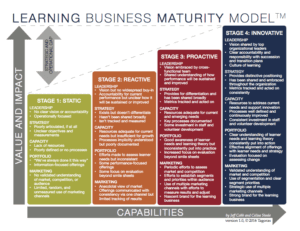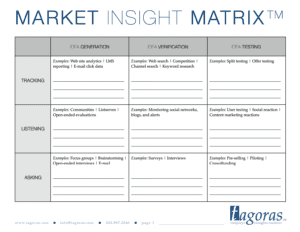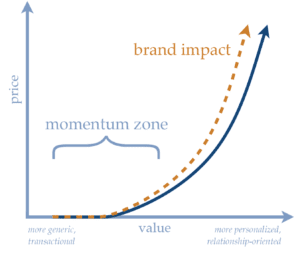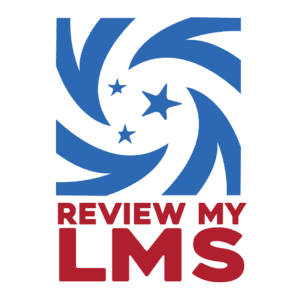In a recent collaboration on a Webinar with the Wisconsin Society of Association Executives (WSAE), we answered questions from members related to strategy and business models for association online education programs. And while WSAE is an association specifically interested in online education, the questions and answers are applicable to any learning business, across all delivery formats.
In this episode of the Leading Learning podcast, we share questions and answers from the session along with a variety of related resources to help you hone your strategy and grow your learning business.
To tune in, just click below. To make sure you catch all of the future episodes, be sure to subscribe by RSS or on iTunes. And, if you like the podcast, be sure to give it a tweet!
Listen to the Show
Read the Show Notes
[00:18] – Our sponsor this quarter is ReviewMyLMS, a collaboration between our company, Tagoras, and 100Reviews, the company that is behind the very successful ReviewMyAMS site. As the name suggests, ReviewMyLMS is a site where users can share and access reviews of learning management systems, and the focus is specifically on systems that are a good fit for learning businesses, meaning organizations that market and sell lifelong learning.
Contribute a review and you get access to all existing and future reviews—there are already more than 100 on the site. And, if you don’t have a review to contribute, there is also a subscription option. For details, check out reviewmylms.com.
[01:26] –A preview of what will be covered in this episode where we answer questions about learning business strategy that came out of a recent session with the Wisconsin Society of Association Executives (WSAE).
Note that the points covered can be applied to any learning business (not only associations) and to any of the formats you’re focused on (not just online). This is also a good example of leveraging content that already exists.
Q&A
[03:10] –
Q1:What is the typical trajectory of education programs, from planning to maturity?
Our Learning Business Maturity Model™ offers a way to think about this trajectory—and by learning business, we mean organizations that market and sell lifelong learning.
The aim with the maturity model was to provide a framework to help surface and assess potential problem areas for learning businesses, but then to provide a clear way to move from problem, to opportunity, and then, we hope, to innovation.
It is also our intention that the model is not only descriptive but also prescriptive, motivational, prompting action and giving that action direction and focus.
We gauge maturity according to characteristics and performance in five domains.
These are domains that we’ve found to be critical to the success of the learning and education businesses we have been involved with over our years of experience: Leadership, Strategy, Capacity, Portfolio, and Marketing.
In cases in which the learning business is part of a larger organization—as it is with most trade associations and professional societies—the model deals with these domains in the context of the learning and education line of business, not the entire organization.

Click here to find out more about the domains and to access questions about each to help you hone in on where your organization is.
The other aspect of the maturity model is the stages. We see maturity progressing through four stages:
- Stage 1: Static
- Stage 2: Reactive
- Stage 3: Proactive
- Stage 4: is Innovative
In each stage, we gauge maturity according to characteristics and performance in the five domains:
- Leadership
- Strategy
- Capacity
- Portfolio
- Marketing
We offer profiles that are basically generic snapshots of learning businesses at each stage of maturity.
These profiles assume similar performance across all five domains. In reality, though, most businesses will perform better in some of the domains and worse in others, so you might be proactive in terms of your portfolio but reactive in marketing, or vice-versa.
To learn more about the Learning Business Maturity Model, check out our previous podcast episodes, The Learning Business Maturity Model and Leveraging the Learning Business Maturity Model.
[07:05] –
Q2: Considering the Learning Business Maturity Model™, are many associations thinking too small? Why should they aspire to maturity? What are the benefits?
There are at least two key reasons why most learning businesses need to be thinking bigger and why striving toward maturity is so important.
First, it’s about delivery of value.
Education and learning are usually a central part of the value proposition for an association. Or, if they are not right now, there is a good chance they need to be for the organization to sustain relevance in today’s world.
Pursuing maturity means pursuing higher value for members and customers.
The second reason is that we are in an increasingly competitive market for adult learning. It’s starting to be a booming business where we see big commercial players, new start-ups, and infusions of venture capital.
If you are not striving to continually improve and mature, there is a good chance you will see some—or even all—of your education market share erode.
[09:46] –
Q3: Are there other business models to be thinking about?
There are so many opportunities now (Jeff talks about a number of these in one of the chapters in Leading the Learning Revolution) and three to highlight include:
- Even if you are an individual member organization, selling to institutional buyers can be a big opportunity. This might be a corporation, government agencies, health systems, etc. But selling many seats at one time, and possibly bundles and subscriptions, really beats trying to sell courses one by one.
- Enhance and extend existing offerings. So, even something as simple as a Webinar could be turned into a much richer, higher value, and higher priced offering if you are able to blend it with valuable supporting materials, a focused, facilitated community element, and possible even face-to-face sessions to go with it. So, think about the different ways you can leverage a single piece of source content. Pare it down to reduce value and price, or add to it to add value and increase price.
- Virtual events. Take your traditional conference model and run a similar offering virtually. Check out our episodes Virtual Conference Tips and Insights and Surging into Virtual Events with Arianna Rehak to learn more.
Serving other markets is one possible way to modify your business model, but, in general, we are not bullish on going into new markets—at least not until you have capitalized on lower hanging fruit.
If and when you do pursue other markets, you need to find ones that truly share similar characteristics and needs so that you can take your existing products/core audience products into that market.
You need to be careful with new products into new markets. They can be high risk, and very often off mission.
Collaboration with academia, on the other hand – particularly as a channel for content/credentials – can be powerful.
Though keep in mind that it does require resources and a level of business development capability that many organizations simply do not have.
See our interview with Bill Clements of Norwich University that was specifically about collaboration with academia.
[14:42] –
Q4: Beyond tracking enrollment, completion numbers, and test scores, how would you recommend measuring the impact of education efforts?
- First, improving the numbers mentioned (enrollment numbers, completion numbers, test score),is really where most organizations should be focusing initially – so, definitely put the time and effort into that going forward.
- Getting better at evaluation – collecting feedback from learners that is truly meaningful. We recommend Performance-Focused Smile Sheets: A Radical Rethinking of a Dangerous Art Form by Will Thalheimer as a resource to help learn how to ask questions that get much closer to really measuring learning.
- Following up with at least some portion of learners over the longer term to determine if the education they have received from you has positively impacted job performance – or whatever the aim was. This, of course, means doing some work up front to assess where learners are before and immediately after any learning experience with you, and then having a formal approach – most often a survey – to follow up at periodic points later – for example, 3 months and 1 year – to assess outcomes. Boosting is also an approach here.
For those who want to go deeper, see our interview with Will Thalheimer.
We also dedicated an entire episode to the topic of impact.
And Mark Nilles of Humentum (InsideNGO at the time) lead a great presentation on the Brinkerhoff Success Case Method at our Leading Learning Symposium on making qualitative approaches more rigorous:
[19:33] –
Q5: Is there a framework for a product development process to follow? How do we figure out what educational offerings various market segments want? And what’s most valuable to them?
First, you need a solid approach to understanding your market and determining what products make sense. We see two key parts to this:
- Consistently monitor the market so that you have a clear understanding of what audience needs are. In some cases it’s because they are explicitly saying the need, but in other cases it’s because you are analyzing the signals.
Our tool – the Market Insight Matrix– basically outlines an approach for doing this.

- You need to understand your own portfolio and where there may be value gaps. You’ll want to look at your products across what we call a Value Ramp™ to find out.

Also check out our episode, 8 Tips for Optimizing Your Value Ramp to learn more.
As far as the development process goes, you want to keep the same mindset you have when analyzing your market and realize that developing a learning product is actually a learning process itself, so you really have to be iterative.
Most instructional designers are familiar with ADDIE. There is a lot to recommend, but you have to allow for more flexibility (rapid prototyping, piloting, etc.).
See Jeff’s post where he describes a modified ADDIE process.
[24:52] –
Q6: Often those in the early stages of developing online education programs don’t have the budget for professional instructional design. What resources are out there to help your organization educate itself about instructional design while you work to build a budget for instructional design?
-
- Articulate – Rapid eLearning Blog
- Design for How People Learn by Julie Dirksen (and our interview with Julie)
- Telling Ain’t Training by Harold Stolovitch (and our interview with Harold)
- eLearning and the Science of Instruction by Ruth Clark and Richard Mayer
- Michael Allen’s Guide to e-Learning:Building Interactive, Fun, and Effective Learning Programs for Any Company (and our interview with Michael)
- Map It: The Hands-On Guide to Strategic Training Design by Cathy Moore (and our interview with Cathy)
[27:51] –
Q7: If not required for continuing education credits or certification, online education is often free. Are we leaving money on the table? How do we determine the value of our education offerings and set prices? What are some steps we can take to move our online education programs from cost centers to revenue centers?
We’ve written and spoken about this extensively but really, there are just three key components to setting price:
-
- What are your customers’ points of reference for the offerings?
- How does the offering fit into your overall product portfolio?
- How do you add or remove value to impact the above two points?
This is all simple, but not necessarily easy to do.
A couple of suggestions for generating more revenue from your educational products:
The number one move most organizations can make is to start charging and/or charging more.
Second—and longer term—you have to do the things we have already talked about. Put the effort into really understanding your market, rationalizing your portfolio, and really focus in on articulating and delivering value.
[33:35] – Wrap Up
If you are getting value from the Leading Learning podcast, be sure to subscribe by RSS or on iTunes.
We’d also appreciate if you give us a rating on iTunes by going to https://www.leadinglearning.com/itunes. We really appreciate your rating and reviews, and those reviews and ratings also help others interested in the learning business find this podcast.
And we would be grateful if you would take a minute to visit our sponsor for this quarter, ReviewMyLMS.
Also, consider telling others about the podcast. Go to https://www.leadinglearning.com/share to share information about the podcast via Twitter, or send out a message on another channel of your choosing with a link to https://www.leadinglearning.com/podcast.
[35:58] – Sign off
See Also:




This is really a great episode. It covers a lot of ground in a very straightforward and digestible way and reminds me to revisit the Learning Business Maturity Model as its been awhile. A key take away for me is looking at opportunities to scale up or down existing offerings to fill in gaps in the Value RampTM.
Thanks for commenting, Gayle (and props, again, to WSAE for providing this type of Webinar to its members). I think one of the often overlooked aspects of tools like the Value Ramp and the Maturity Model (and countless other tools like them), is that a lot of the value comes from revisiting them over time – reassessing, adjusting, sparking the conversations that lead to new ideas and actions. Glad to hear you will be using the Value Ramp evaluate/re-evaluate your portfolio. – JTC